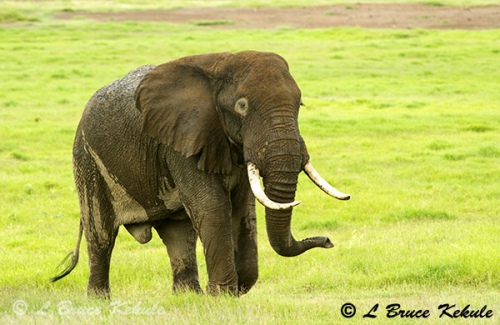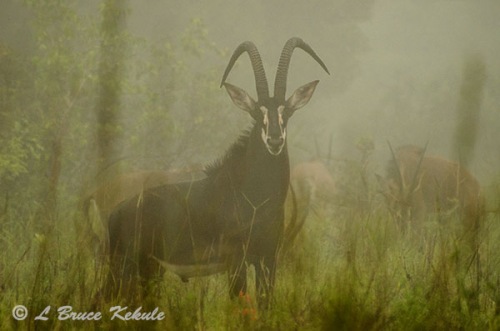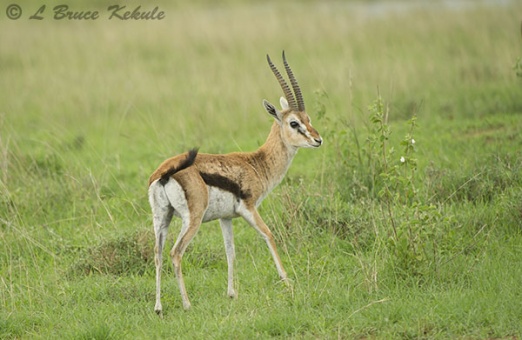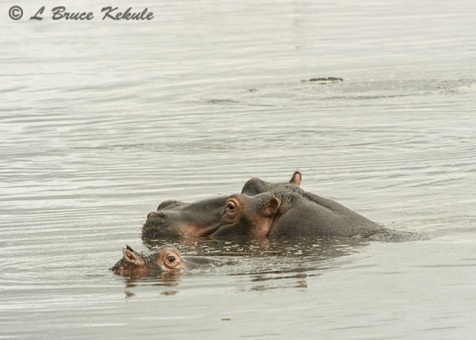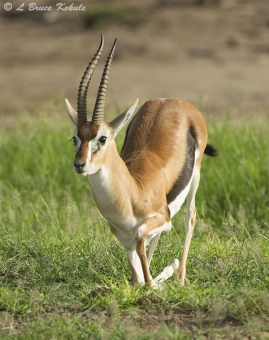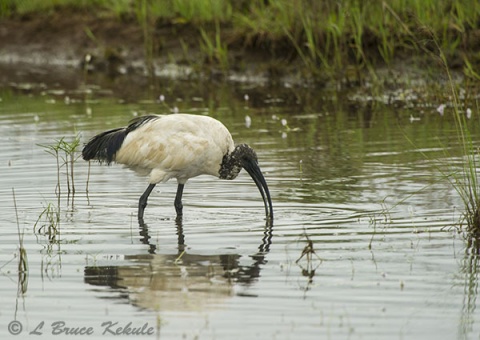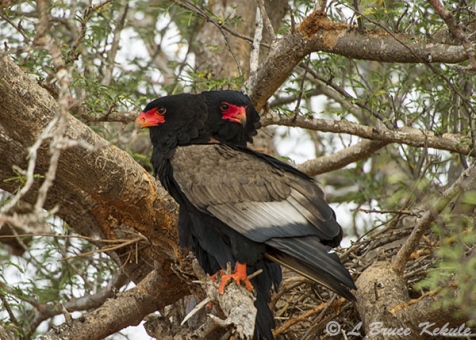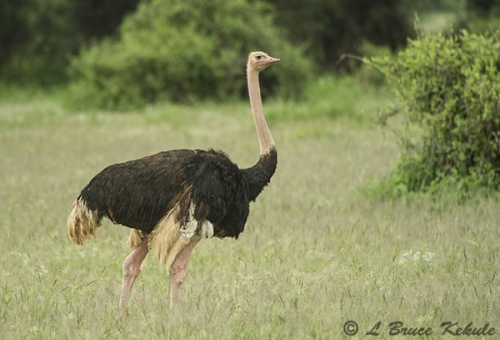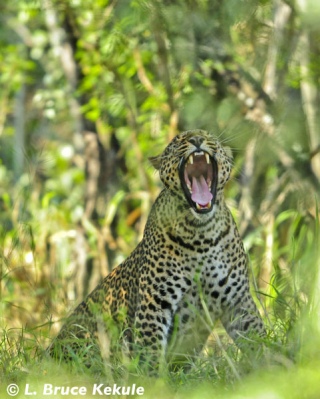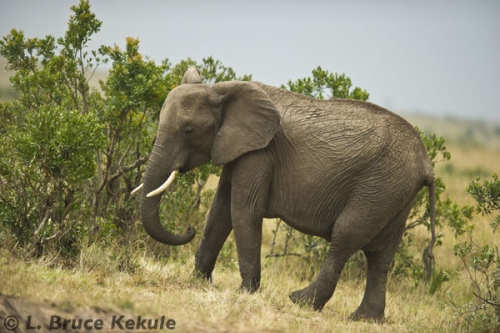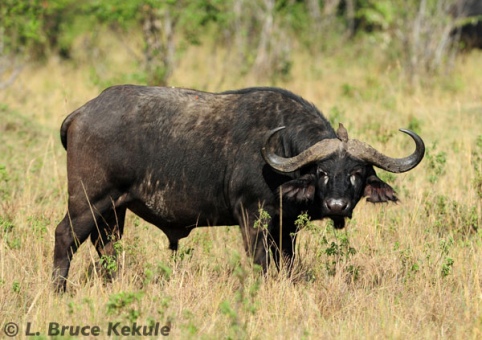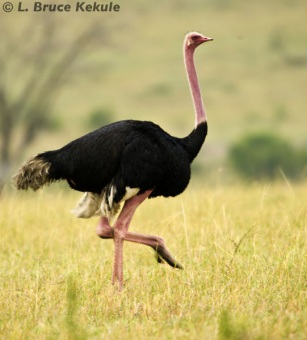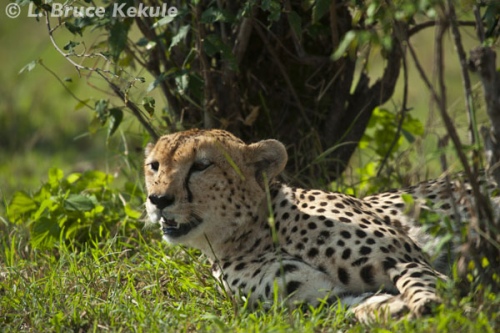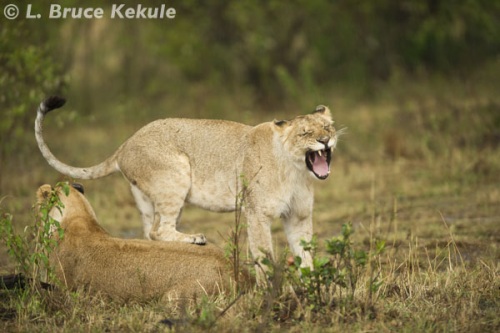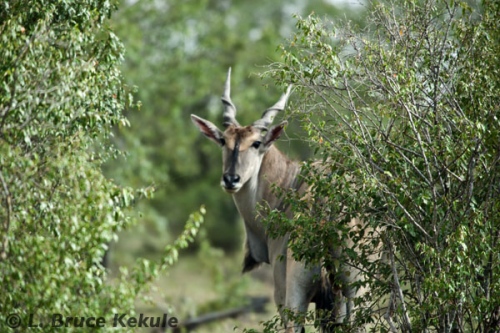Posts Tagged ‘photographic safari’
African wildlife in Southern Kenya
African Safari in May 2012 – Part Two
Africa is not just about the ‘Big Five’. It’s also about all the other amazing creatures and ecosystems that make up the tremendous biodiversity of flora and fauna found here.
Bull elephant just after a rain in Amboseli National Park
It can be said that Kenya is one of the most diverse and best-protected wildlife habitats anywhere in the world where tourists and photographers alike can consistently see and photograph wild animals up-close for the most part.
Striped hyena in Tsavo (East) National Park
However, some of Kenya’s wildlife is not that easy to spot like the rare striped hyena or sable antelope, while others are downright easy such as elephants and buffalo for example.
Sable antelope male in the mist at Shimba Hills Wildlife Sanctuary
Some species have become so habituated to safari vehicles and its occupants, especially lion and cheetah. Most times the big cats simply ignore you. But not all these animals are that tame like the elusive leopard, or even antelope like eland.
Eland bull in Nairobi National Park
Some creatures flee at the first sight of a vehicle and man (years and years of poaching pressure) knowing very well that retreat is the only safe course of action, and humans are not to be trusted.
Bat-eared fox near dusk in Amboseli
Hence, it is not always that easy as some might surmise. It’s about luck too. Some days are stellar while others are just mediocre. But for the most part, it is a photographers dream come true..!
Rock hyrax in Tsavo (West) National Park
While on safari, I shoot everything I see (through the lens of course) until I’m satisfied I have the shot, or the animal has left the scene.
Rock hyrax family in Tsavo
Over the past three years, I have made three trips to the ‘Dark Continent’ and you could say I’m addicted to the place. This trip I visited Amboseli and Tsavo national parks near Mount Kilomanjaro, Taita Wildlife Sanctuary nearby and Shimba Hills Wildlife Sanctuary near the southern coastal city of Mombassa plus Nairobi National Park over two weeks.
Lioness during late afternoon in Tsavo (East) National Park
I traveled some 3,00o kilometers with my good friend and guide/driver, Patrick Mjoroge, a Kenya national. With more than 25 years of experience, he has been an important asset in my photographic quest.
Lioness on the run after prey in Tsavo
Transworldsafaris.com in Nairobi have also been very helpful in setting up my trips. They are truly one of Kenya’s best safari companies and I recommend them to anyone interested in going.
Another giraffe male in Tsavo (East)
I now have accumulated quite a lot of photographs for an up-coming book project about wildlife in Asia and Africa showing a comparison between the two continents.
Giraffe during late afrternoon in Shimba Hills
At the end of the day, the game of wildlife photography is all about how lucky you are. What is around the next bush or bend in the road is the big question?
Zebra taking it easy in Amboseli
I have been very fortunate to visit Kenya but consistency, good photographic technique and equipment plus determination is the real secret to successful wildlife photography, whether it’s in Africa, Asia or the U.S. for that matter.
Thompson’s gazelle in Nairobi
Shortly (December 5th), I leave for Kenya once more (3-week trip) and hope I can close out a few more species still not in the bag like kudu and wild dog that have been very elusive.
Hippo mother and calf in Amboseli
It is hoped all will take pleasure in this photo essay as much as I have writing and photographing it. Enjoy…!
Additional photos while on safari in May:
Nile crocodile in Tsavo (West)
Cheetah on the prowl in Amboseli
Cheetah family in Amboseli
Cheetah on the run in Amboseli
Red hartebeest in Taita Wildlife Sanctuary
Thompson’s gazelle in Amboseli
Black-headed heron in Amboseli
Sacred ibis in Nairobi
Bateleur pair in Tsavo (East)
Glossy ibis in Tsavo (West)
Ostrich in Nairobi
Marabou stork in Tsavo (West)
Grey-headed crane in Amboseli
African fish eagle in Amboseli
Ground hornbills in Tsavo (West)
Sable male in Shimba Hills
Sable female and calf in Shimbe Hills
Cape buffalo in Nairobi National Park
Africa Revisited: Photographic safari to Kenya – 2011
Photographing Africa’s ‘Big Five’ and other amazing creatures of nature in Kenya’s Siana Springs Conservancy, Masai Mara National Reserve and Nairobi National Park
‘In memory of George Ndungu, my driver and guide who passed
away from malaria shortly after this safari’
It is said: “a visit to Africa sometimes becomes an addiction”. I got snagged on my very first trip in 2010! Kenya’s remarkable wildlife and natural ecosystems are unforgettable and hence, one can become hooked. I now have the so-called ‘African bug’. On my first safari to Kenya’s vast protected areas, it was an exciting event for me and a dream come true. I decided then that I would return at least once a year to photograph what is undeniably one of the top wildlife photography places on the planet.
Leopard cub in dry streambed (donga) in the Masai Mara National Reserve
During the early part of 2011, I arranged a safari with the same company used in 2010. They are Transworld Safaris Kenya based in Nairobi. Sati Lota, the Tours Manager, was very helpful in planning the trip scheduled for mid-August. A group of five Thai photographers would join me on this trip. All the required fees, air tickets, visa to Kenya and other essentials were taken care of three months before departure to the Dark Continent.
Mother leopard yawning in the shade in the Masai Mara
When August 16th finally rolled around, the team and I met at Suvarnabhumi Airport and boarded Kenya Airways just after noon. The flight was eight and half hours long and we arrived around 7pm. We quickly zipped through immigration and customs and were met by Patrick Njoroge and George Ndungu, the two drivers used from 2010. They had proven to be expert tour guides and Sati was kind enough to arrange for them plus two 4X4 Toyota Land Cruisers for our safari. After getting stuck several times in a van last year on wet greasy roads, I insisted on four-wheeled vehicles this time around. It proved to be the right choice as it did rain quite a few times making the roads tough in places.
African elephant in the Masai Mara
We were whisked away to the Ole Sereni Hotel not far from the airport and put up for the night. It is absolutely dangerous to drive around Kenya’s back roads during darkness so we rested up for the long 6-hour drive the next morning to the Masai Mara National Reserve in the Southwest near the border with Tanzania.
African Cape buffalo in the Masai Mara
The next morning after breakfast, we were on our way out of hectic Nairobi and stopped at a supermarket to buy foodstuffs and some green peas to fill our beanbags. This is very important for a steady support while photographing wildlife from the Land Cruisers’ windows and open top. After that, it was on the road again up to the rim of the Great Rift Valley and down to the massive valley floor. The main town is Narok and it is a trucker’s waystop, and a very busy place.
White rhino in Nairobi National Park
Off again and as we got nearer to the Masai Mara, the dirt track became rough. The skies were cloudy and the temperature was pleasant but the dusty pot-holed road began to wear us down quickly. We stopped at a trinket shop that gave us some relief to stretch and relax. After a quick cup of coffee, we were on the road again. As we got closer, a herd of zebra jumped across the front of the truck and I quickly pulled out my medium camera and fired off a few shots. As the light was harsh, it was just a practice run getting warmed up for the safari, and testing my new Nikon D7000 camera and 70-300mm VR lens that also has great video capability. I wanted to record motion and behavior this time around to be used in wildlife presentations I do from time to time.
Old male lion in the Masai Mara
We finally arrived at our first hotel, the Siana Springs Tented Camp in the Siana Springs Conservancy, a protected area next to the Masai Mara. This place was pleasant and the rare African bushbuck thrives here coming out on the hotel grounds to munch the fresh grass. Lunch was being served so we ate and then moved into our tents that were very comfortable. That afternoon, everyone jumped into the land cruisers and we were off for our first game drive. Later that night we had a wonderful dinner as the temperature dropped to about 12 degrees Centigrade, and we all slept like logs after the long haul from Nairobi. It was absolutely marvelous and we were impressed with the food, professional service and management run by Richard Siele, a Kenyan national.
African bushbuck in Siana Springs Hotel grounds
As we moved into the park, gazelles and zebras were grazing on the lush grass with an ostrich here and there. Close to the end of the day, we bumped into a herd of Kenyan giraffes (also know as the Masai giraffe) in beautiful afternoon light. I now have three species of giraffe including the reticulated and the rare Rothschild giraffes photographed the previous year. We also managed to catch some black-back jackals out hunting for prey. It was a great start and we all agreed to do another game drive the following morning.
Thompson’s gazelle in Siana Springs Conservancy
At 6.30am after breakfast, we were off into the conservancy once again hoping to bump into lion or leopard but they remained elusive. After an hour of driving around, we found a large group of baboons out hunting in the crisp morning light. And then a male solitary giraffe was nibbling the treetops as the sun peaked over the hills. I got some amazing photos and video. Shortly after that, a small family group of elephants was spotted so we moved in closer. The huge gray beasts paid no attention to our vehicles. The beauty of this place; there were no other safari companies doing game drives here. We had the whole place to ourselves unlike what we were about to see the next few days in the Masai Mara.
Ostrich in Siana Springs
We left Siana Springs for a hotel near the main gate of the Masai Mara National Reserve. It was decided to go straight into the park for a quick look. After several kilometers, we saw a group of safari vans parked in a semi-circle around a tree so down we went. Three cheetahs (a mother and two cubs) were sleeping at the base of the tree. I was able to get some frame filling shots of the three-some. After some time, the group decided to check-in to the Sentrim Mara Tented Camp, which was very much different from our previous accommodations. The surrounding area was dry like a desert unlike Siana Springs which was green and crisp.
Masai giraffe also known as Kenyan giraffe in Siana Springs
Over the next five days, our daily excursions into the reserve where we met with some terrific African wildlife scenes. We saw lion, cheetah, hyena and a jackal on several kills, a few solitary male lions, buffalo, herds of elephant, the shy Eland (the largest of the African antelope) plus baboon, ground hornbill, vulture, secretary bird and of course the massive herds of wildebeest, zebra and antelope.
Cheethas on a kill in the Masai Mara
Our departure date came and we left the reserve, but this time with a bit of disappointment. At one cheetah kill, there were almost 50 vehicles on the road all locked-in a traffic jam. Most operators now have short-wave radio and keep in touch with each other. When something of great interest like lion, leopard or cheetah is seen, the vans and 4X4s’ coming rushing to get a glimpse of the spectacle as sightings are normally short. It has now become quite hectic in many places, especially the immense river crossings on the Mara River during August-September, the peak season.
Lions on a kill in the Masai Mara
Our next stop was back in the capital where we entered Nairobi National Park for a half-day safari. This park is right next to the airport and our hotel, and has some interesting creatures including lion, leopard, black and white rhino, plus many other classic African animals except the elephant. We got white rhino just inside the gate to make-up the ‘Big Five’ for all of us. We also got an old lazy male lion in the shade, and some African spoonbills, some of Africa’s rarest birds. The park provided a great time and loads of photographic images at the tail-end of the safari.
Hyena and jackal on a kill in the Masai Mara
At the end of the day, we headed back to the hotel. The next day we did a little shopping and then boarded the flight home to Thailand in the evening. Looking back, it was once again a great opportunity to observe and record Kenya’s superb wildlife and habitats.
Cheetha resting on the Masai Mara plain
I have already made arrangements to do another safari next year but at new locations in southern Kenya, which will include the famous Amboseli, Tsavo and Simba Hills national parks not far from the iconic Mount Kilimanjaro, Africa’s highest mountain. I will spend about two weeks chasing after Kenya’s impressive wildlife and truly look forward to this adventure. I now have the African bug!
Safari group from Thailand in August 2011 on the Masai Mara
*************************************************************************************
Additional photos from the 2011 Safari
Red Hartebeest in the Masai Mara
Lion female stretching in the Masai Mara
Playful lion cub in the Masai Mara
Elan bull in the Masai Mara
Zebras in the Masai Mara
African spoonbills in Nairobi National Park
Little bee-eater in Nairobi National Park
African lilac roller in the Masai Mara


